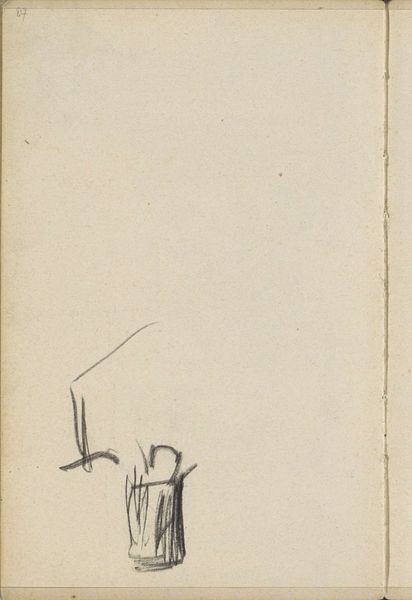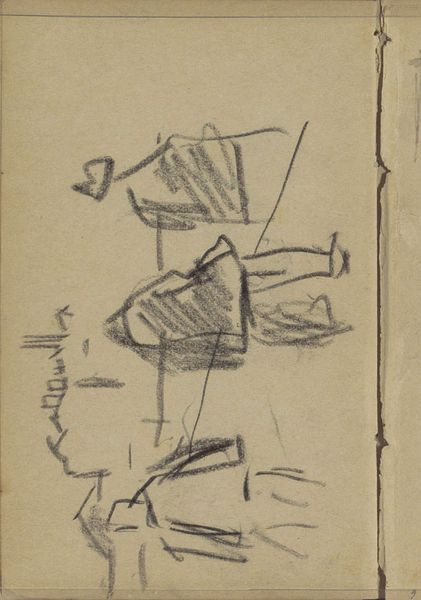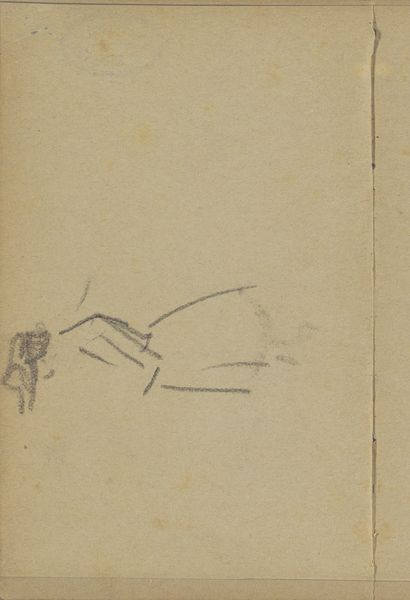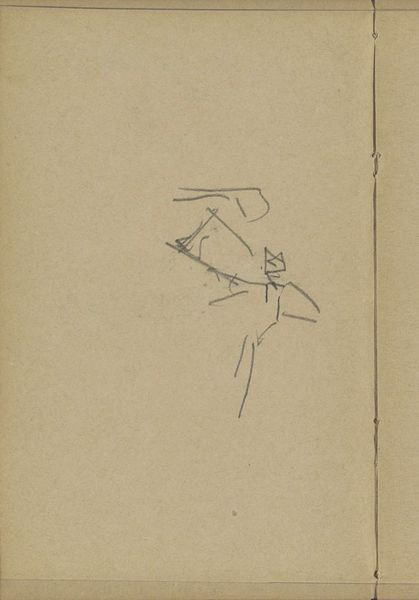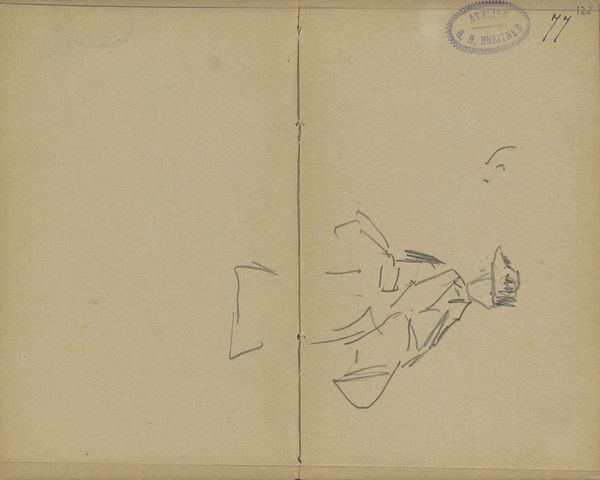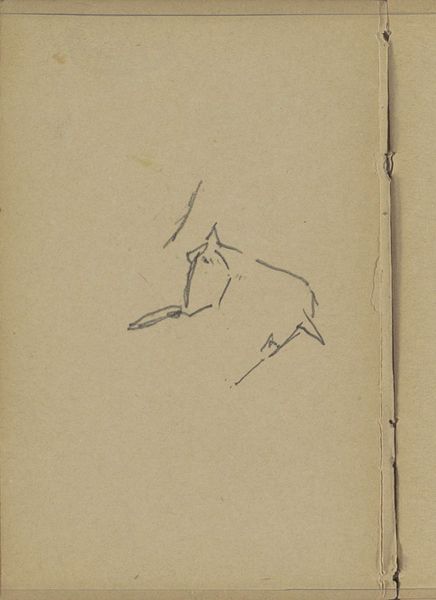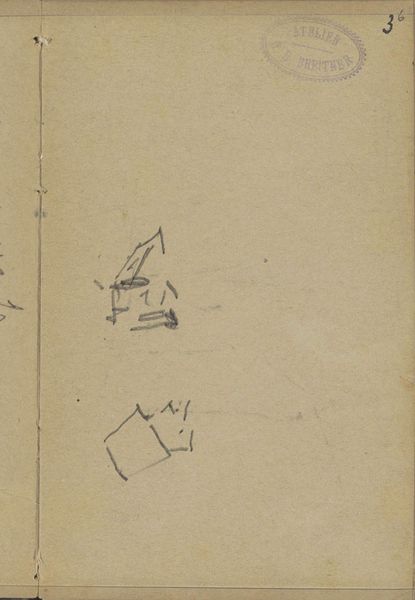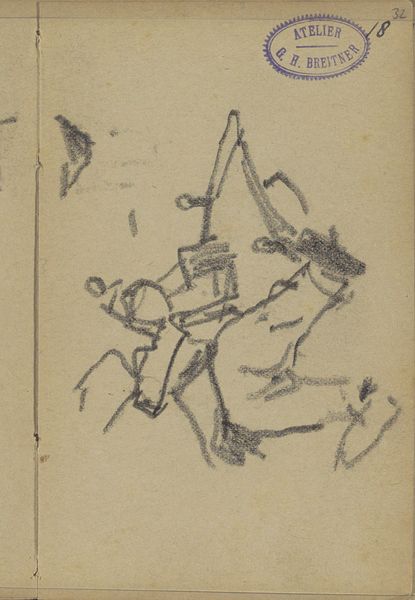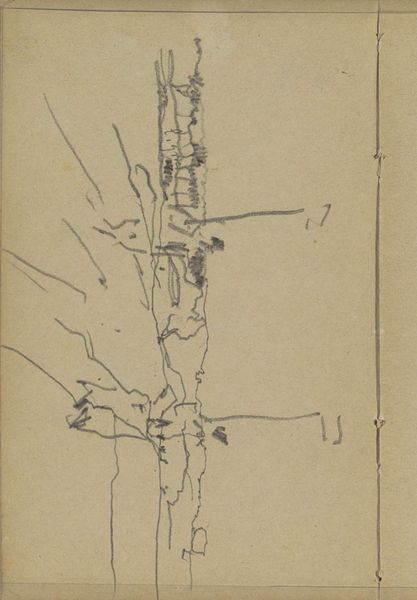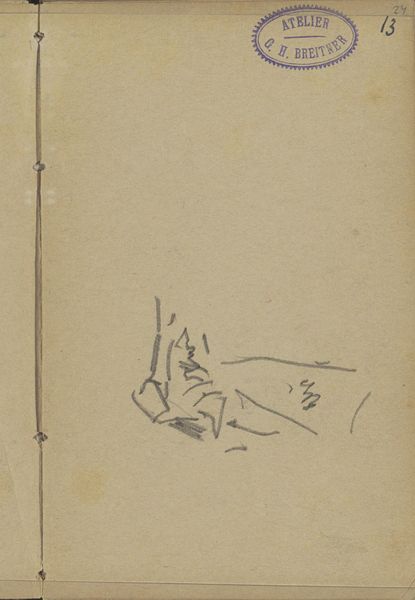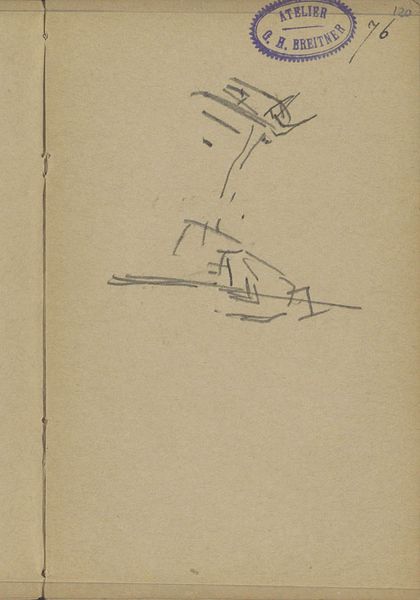
drawing, paper, ink
#
drawing
#
sketch book
#
figuration
#
paper
#
ink
#
sketch
#
horse
#
sketchbook drawing
#
modernism
Copyright: Rijks Museum: Open Domain
Curator: Immediately, I notice the incredible economy of line. It's just a suggestion of form, yet I instantly perceive movement, even energy, within this very sparse sketch. Editor: Precisely! The work we are observing, "Soldier, possibly on horseback," by George Hendrik Breitner, dating from 1887 to 1891, showcases Breitner’s characteristic brevity. Crafted with ink on paper, this drawing is currently held at the Rijksmuseum. Curator: It feels more than just a study of a military figure; the marks evoke a sense of transient force and perhaps the soldier's place within a larger narrative, calling forth echoes of countless martial campaigns and national symbolism associated with cavalry. Does that symbolism still hold for our contemporary audience? Editor: An interesting query, as Breitner employs line almost architecturally. Consider how the negative space shapes the forms of both man and horse. The abstraction itself comments on modernity's fracturing of the classical martial ideal. It becomes about capturing speed, essence, even ephemerality, rather than adhering to rigid representational traditions. Curator: The ambiguity, as in, “possibly on horseback,” introduces an intriguing layer. Breitner doesn’t merely depict; he prompts the viewer to actively participate in constructing the narrative. He teases at narratives related to conflict, power, and perhaps vulnerability – considering the precarious nature suggested by the fleeting lines of the sketch. The sparseness may evoke themes of human frailty amid warfare. Editor: Indeed. The composition’s openness directs attention to line and mark-making, which in turn function as cultural markers. How different it might seem had it been meticulously detailed or idealized in the manner of say, a history painting or monumental military equestrian statue! Curator: Well, this certainly spurs my reflections on memory, war, and representation! Editor: And I'm compelled to reconsider the visual language and its ongoing evolution, especially regarding modernity and image production.
Comments
No comments
Be the first to comment and join the conversation on the ultimate creative platform.
